Abstract
The seroepidemiology of chlamydial infections in the Finnish population was studied by analysing the prevalence of chlamydial complement fixing (CF) antibodies in patients sera sent for virus serological screening tests over 17 years from 1971 to 1987. The total number of sera studied was over 160,000. In the early 1970s, the prevalence of chlamydial CF antibodies (CF titres greater than or equal to 8) was low (less than 2%), but later the proportion of seropositive cases rose, and in 1976, 18% of sera contained antibodies. In 1984, the seropositivity rate was over 31%. The prevalence of high chlamydial CF titres (titres greater than or equal to 64) also showed annual variation. In general, under 1% of sera contained chlamydial CF antibodies in high titre, but in 1979 and 1984, distinct peaks occurred when 1.3% and 1.4% of sera, respectively, had titres greater than or equal to 64. The age-related antibody positivity rate showed a decline during early infancy, an increase in childhood and adolescence, and a stable level in adulthood when approximately 20% of the sera contained antibodies. The chlamydial antigen used in this survey was genus-specific, i.e. it detects antibodies against all chlamydial species. Epidemiological data support the hypothesis that infections due to a novel chlamydial species, TWAR chlamydia, are the most likely explanation for the relatively frequent occurrence of chlamydial CF antibodies and for the variation in CF antibody prevalence.
Full text
PDF
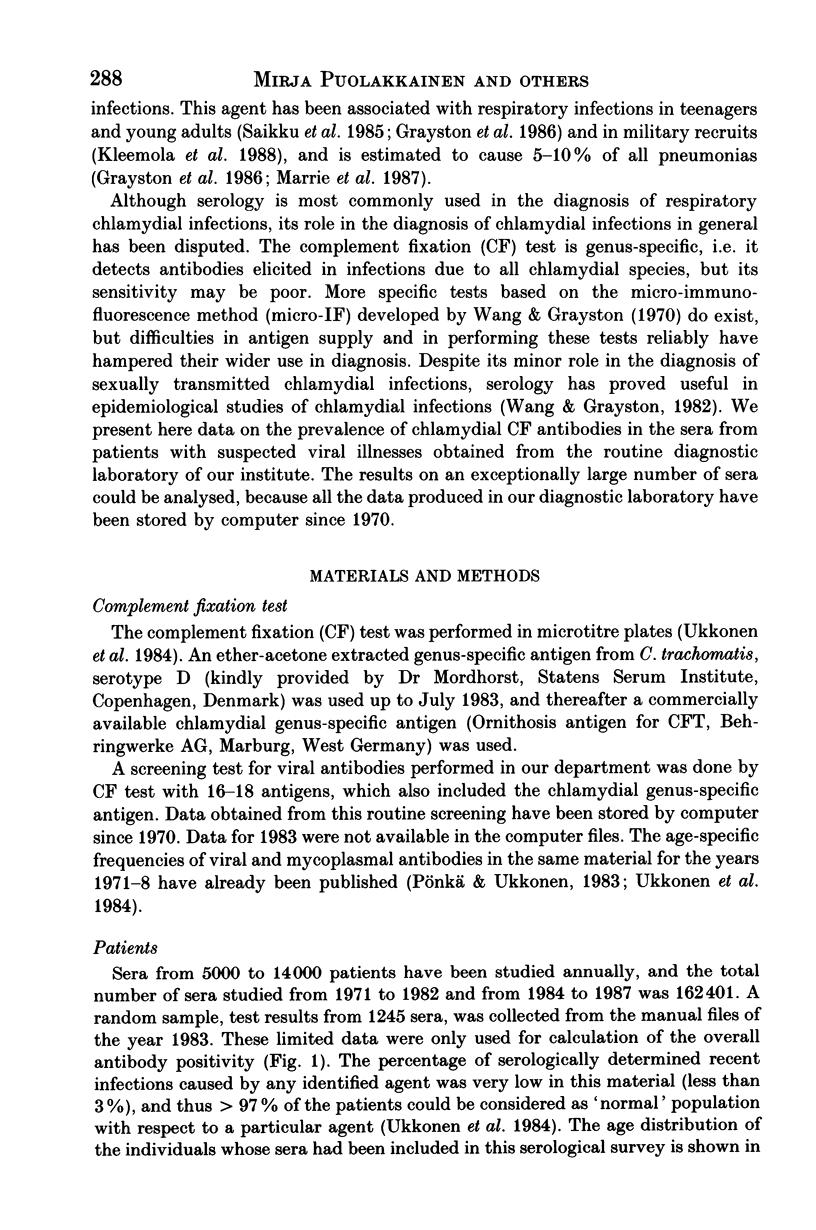
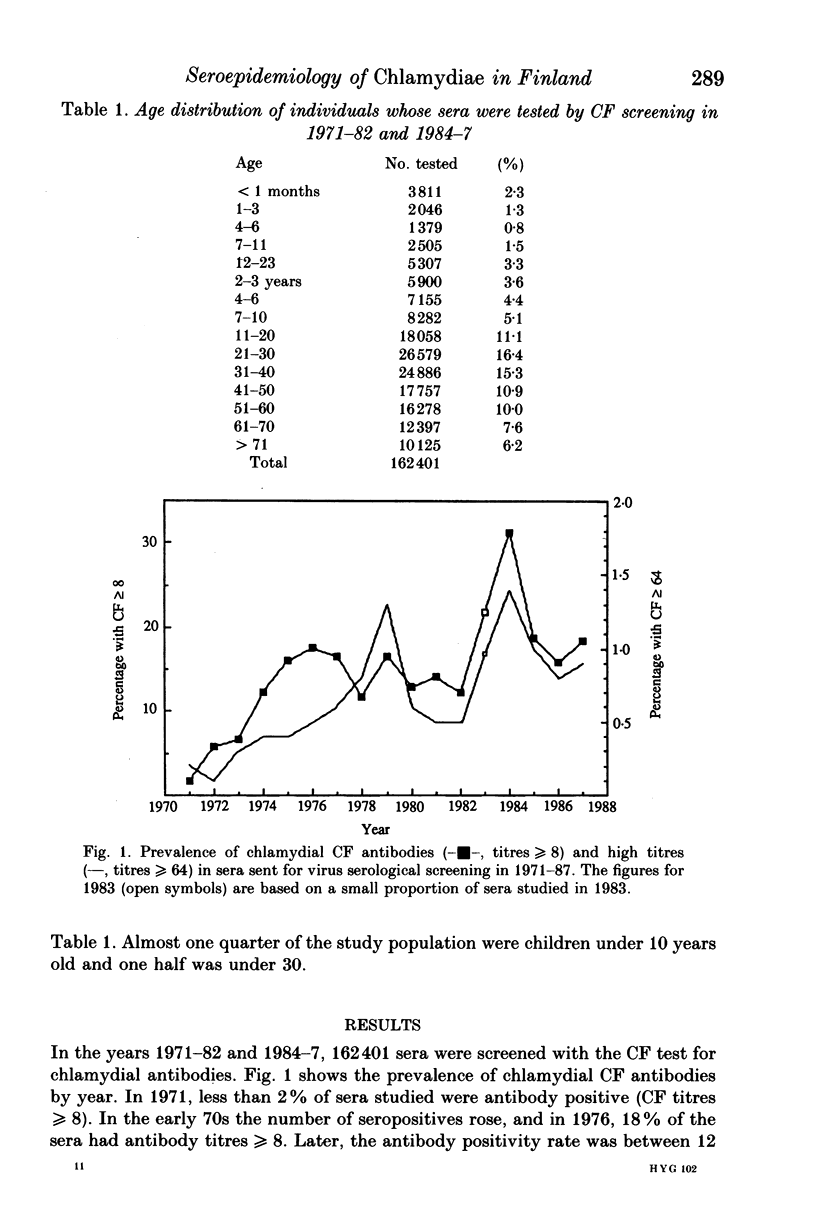
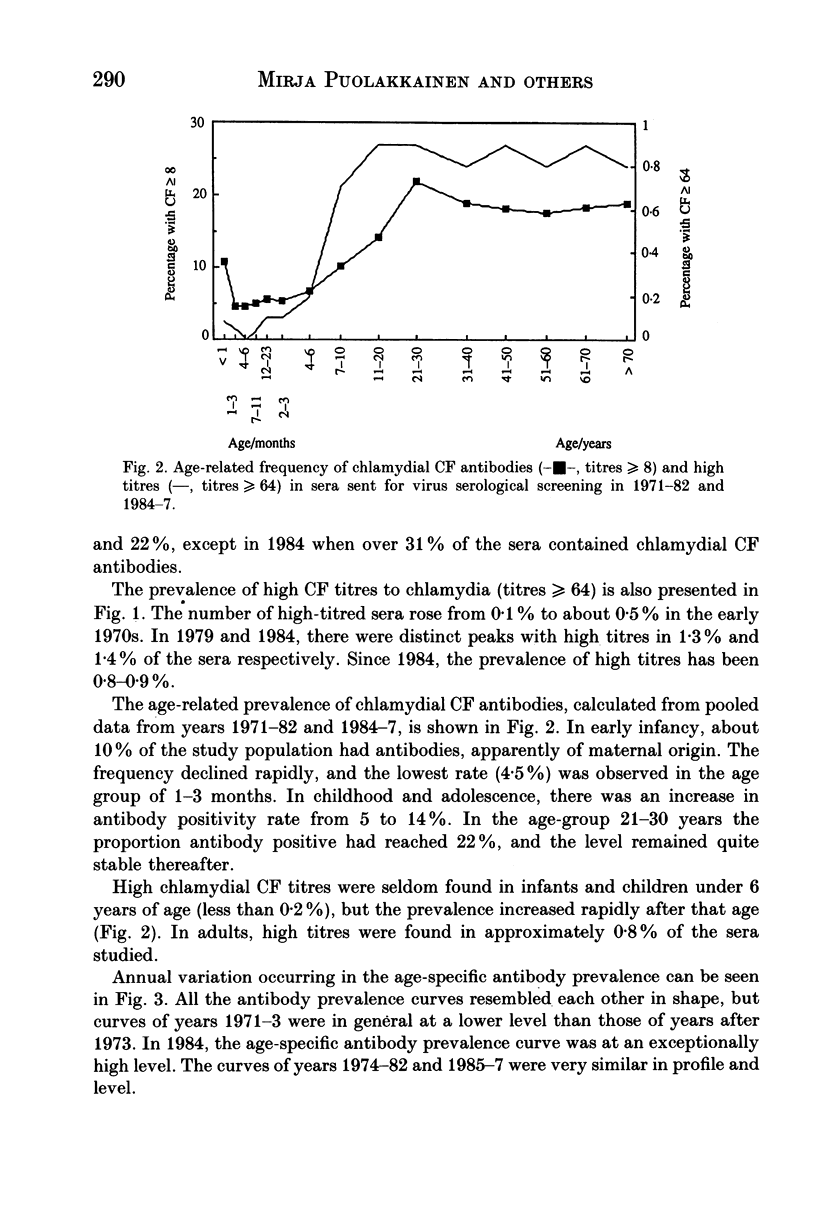
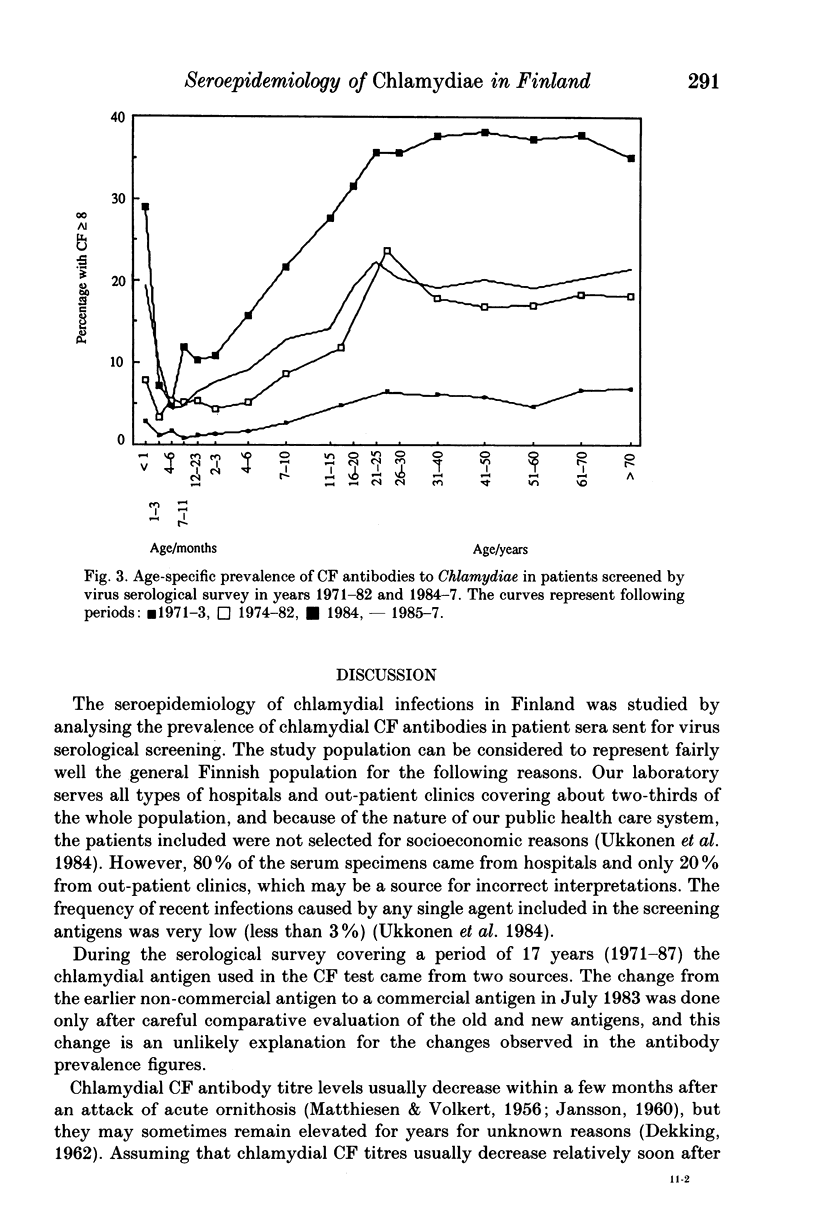
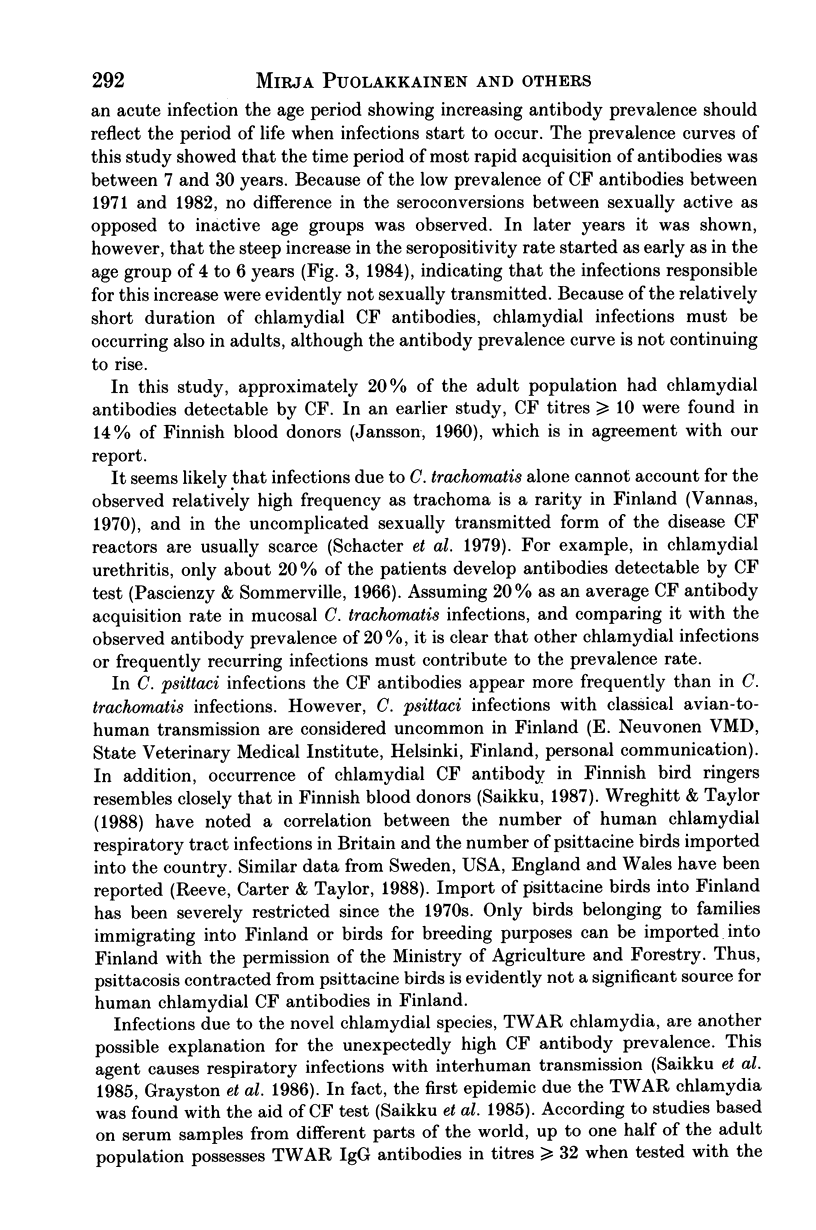
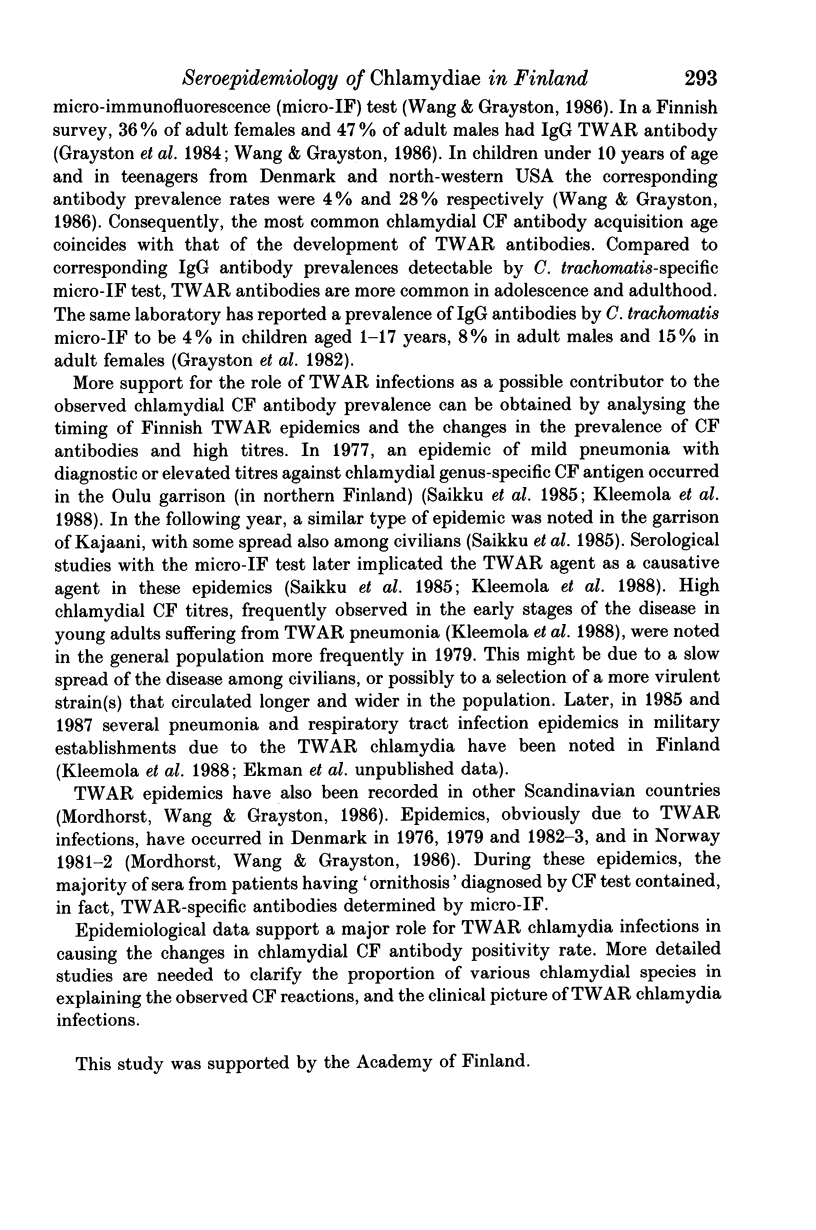
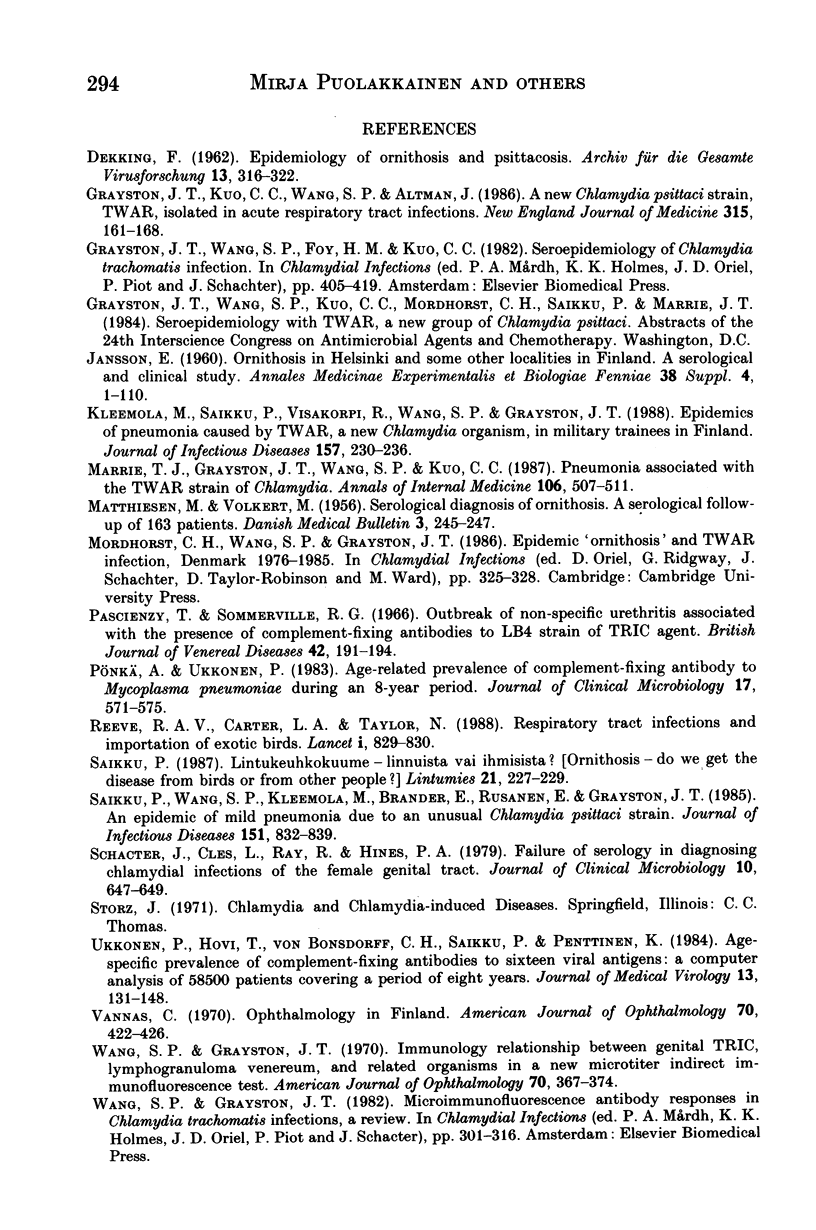

Selected References
These references are in PubMed. This may not be the complete list of references from this article.
- DEKKING F. Epidemiology of ornithosis and psittacosis. Arch Gesamte Virusforsch. 1963;13:316–322. doi: 10.1007/BF01243858. [DOI] [PubMed] [Google Scholar]
- Grayston J. T., Kuo C. C., Wang S. P., Altman J. A new Chlamydia psittaci strain, TWAR, isolated in acute respiratory tract infections. N Engl J Med. 1986 Jul 17;315(3):161–168. doi: 10.1056/NEJM198607173150305. [DOI] [PubMed] [Google Scholar]
- JANSSON E. Ornithosis in Helsinki and some other localities in Finland. A serological and clinical study. Ann Med Exp Biol Fenn. 1960;38(Suppl 4):1–110. [PubMed] [Google Scholar]
- Kleemola M., Saikku P., Visakorpi R., Wang S. P., Grayston J. T. Epidemics of pneumonia caused by TWAR, a new Chlamydia organism, in military trainees in Finland. J Infect Dis. 1988 Feb;157(2):230–236. doi: 10.1093/infdis/157.2.230. [DOI] [PubMed] [Google Scholar]
- MATTHIESEN M., VOLKERT M. Serological diagnosis of ornithosis; a serological follow-up of 163 patients. Dan Med Bull. 1956 Dec;3(8):245–247. [PubMed] [Google Scholar]
- Marrie T. J., Grayston J. T., Wang S. P., Kuo C. C. Pneumonia associated with the TWAR strain of Chlamydia. Ann Intern Med. 1987 Apr;106(4):507–511. doi: 10.7326/0003-4819-106-4-507. [DOI] [PubMed] [Google Scholar]
- Pasieczny T., Sommerville R. G. Outbreak of non-specific urethritis associated with the presence of complement-fixing antibodies to the LB4 strain of TRIC agent. Br J Vener Dis. 1966 Sep;42(3):191–194. doi: 10.1136/sti.42.3.191. [DOI] [PMC free article] [PubMed] [Google Scholar]
- Pönkä A., Ukkonen P. Age-related prevalence of complement-fixing antibody to Mycoplasma pneumoniae during an 8-year period. J Clin Microbiol. 1983 Apr;17(4):571–575. doi: 10.1128/jcm.17.4.571-575.1983. [DOI] [PMC free article] [PubMed] [Google Scholar]
- Saikku P., Wang S. P., Kleemola M., Brander E., Rusanen E., Grayston J. T. An epidemic of mild pneumonia due to an unusual strain of Chlamydia psittaci. J Infect Dis. 1985 May;151(5):832–839. doi: 10.1093/infdis/151.5.832. [DOI] [PubMed] [Google Scholar]
- Schachter J., Cles L., Ray R., Hines P. A. Failure of serology in diagnosing chlamydial infections of the female genital tract. J Clin Microbiol. 1979 Nov;10(5):647–649. doi: 10.1128/jcm.10.5.647-649.1979. [DOI] [PMC free article] [PubMed] [Google Scholar]
- Ukkonen P., Hovi T., von Bonsdorff C. H., Saikku P., Penttinen K. Age-specific prevalence of complement-fixing antibodies to sixteen viral antigens: a computer analysis of 58,500 patients covering a period of eight years. J Med Virol. 1984;13(2):131–148. doi: 10.1002/jmv.1890130204. [DOI] [PMC free article] [PubMed] [Google Scholar]
- Vannas S. Some features of ophthalmology in Finland. Am J Ophthalmol. 1970 Sep;70(3):422–426. doi: 10.1016/0002-9394(70)90102-9. [DOI] [PubMed] [Google Scholar]
- Wang S. P., Grayston J. T. Immunologic relationship between genital TRIC, lymphogranuloma venereum, and related organisms in a new microtiter indirect immunofluorescence test. Am J Ophthalmol. 1970 Sep;70(3):367–374. doi: 10.1016/0002-9394(70)90096-6. [DOI] [PubMed] [Google Scholar]
- Wong S. Y., Gray E. S., Buxton D., Finlayson J., Johnson F. W. Acute placentitis and spontaneous abortion caused by chlamydia psittaci of sheep origin: a histological and ultrastructural study. J Clin Pathol. 1985 Jun;38(6):707–711. doi: 10.1136/jcp.38.6.707. [DOI] [PMC free article] [PubMed] [Google Scholar]
- Wreghitt T. G., Taylor C. E. Incidence of respiratory tract chlamydial infections and importation of psittacine birds. Lancet. 1988 Mar 12;1(8585):582–582. doi: 10.1016/s0140-6736(88)91368-2. [DOI] [PubMed] [Google Scholar]


